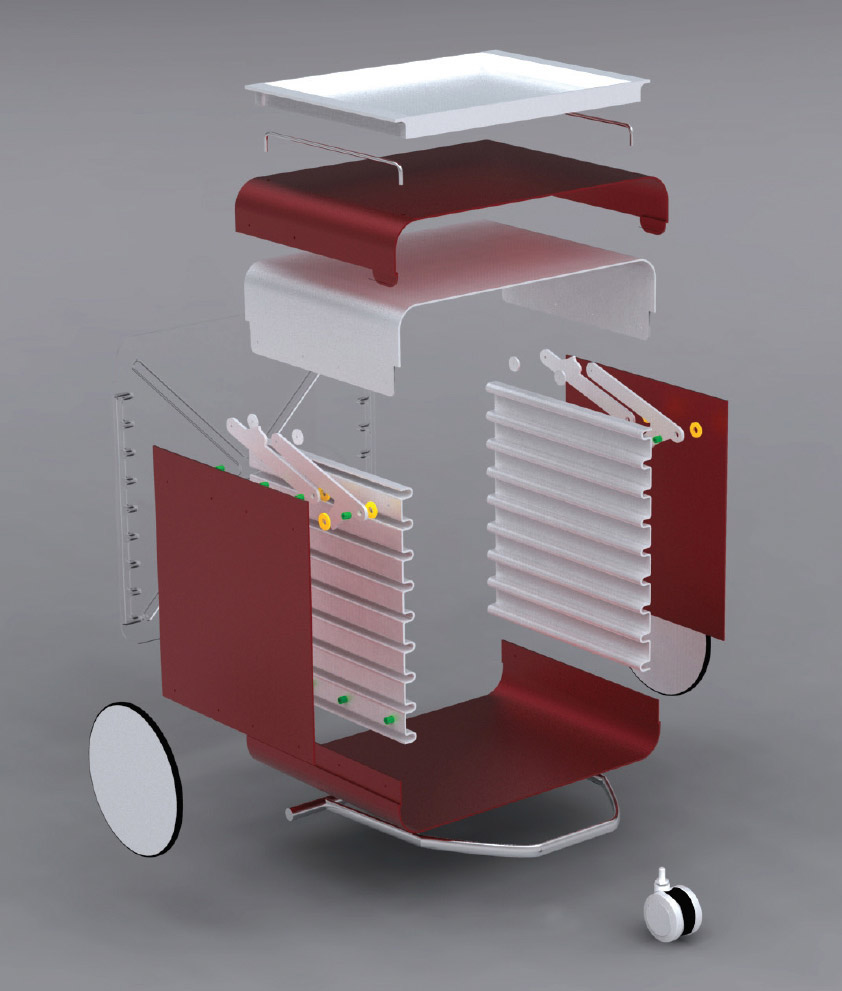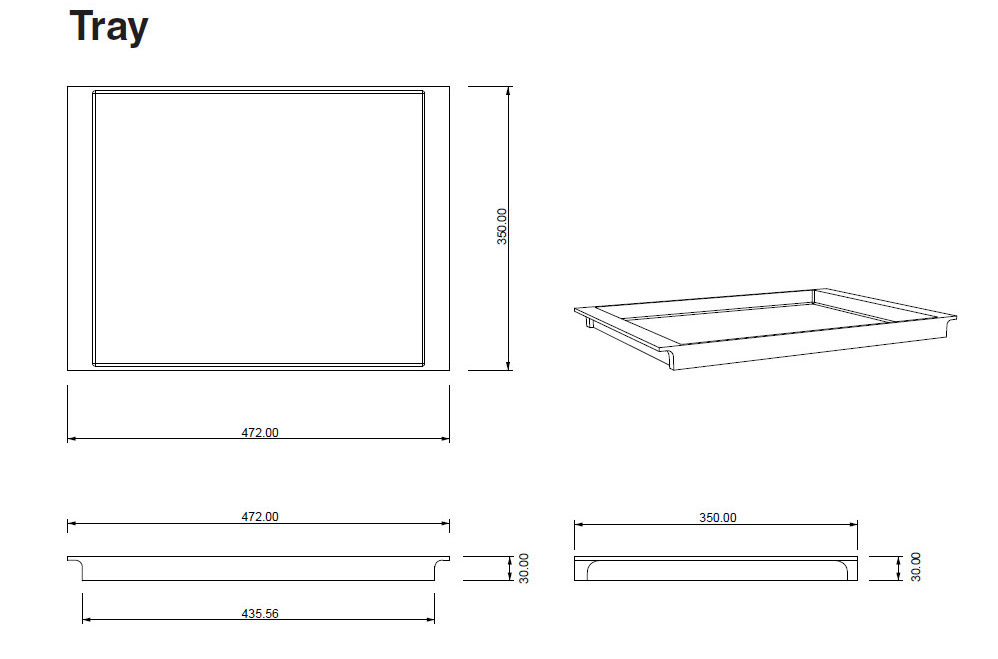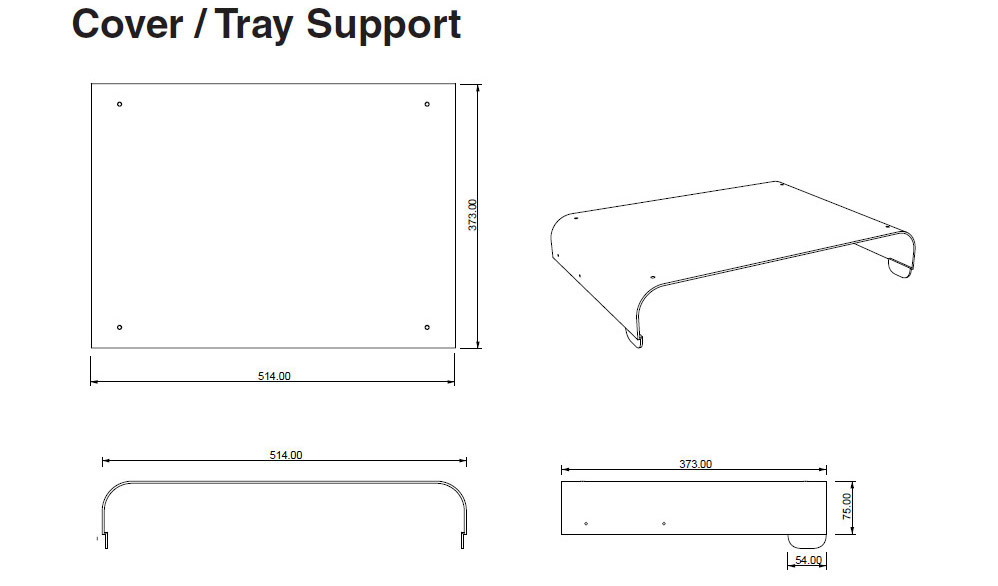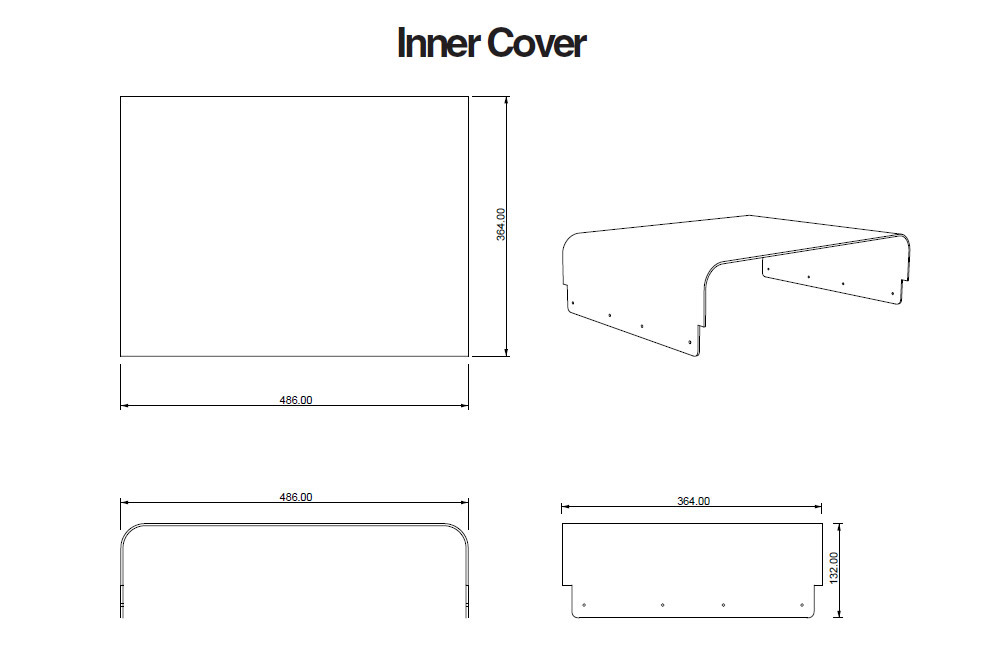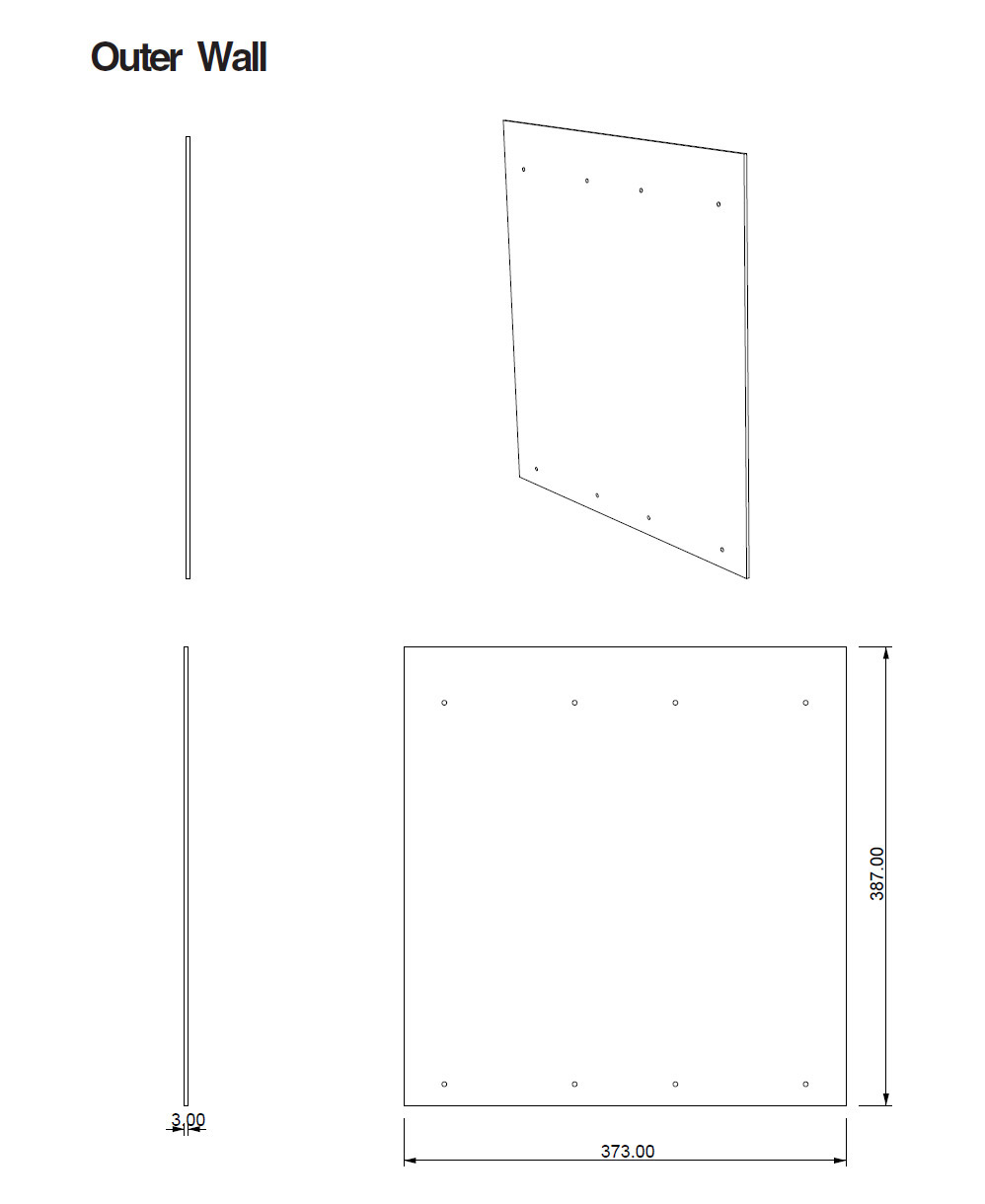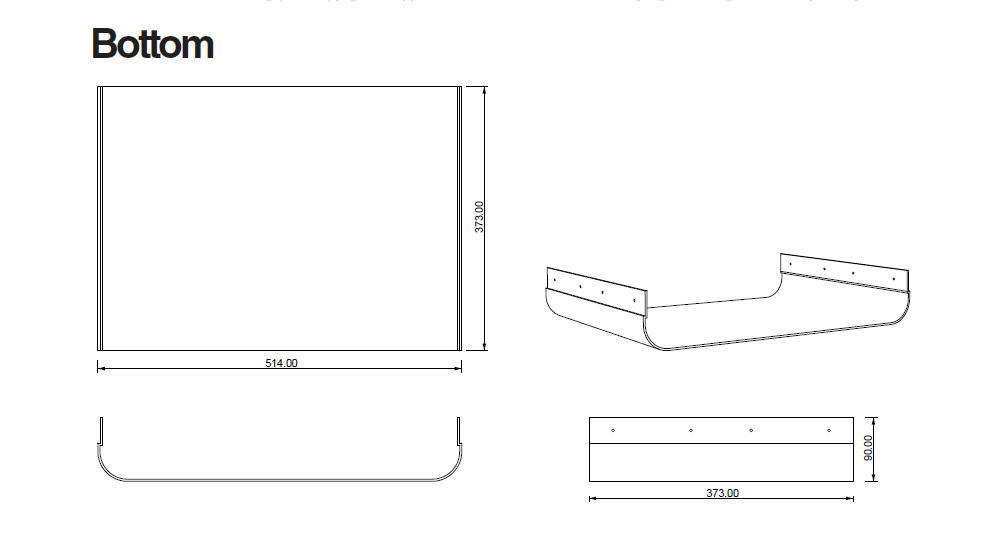Personal. Work. Spaces.
A Mobile Workstation
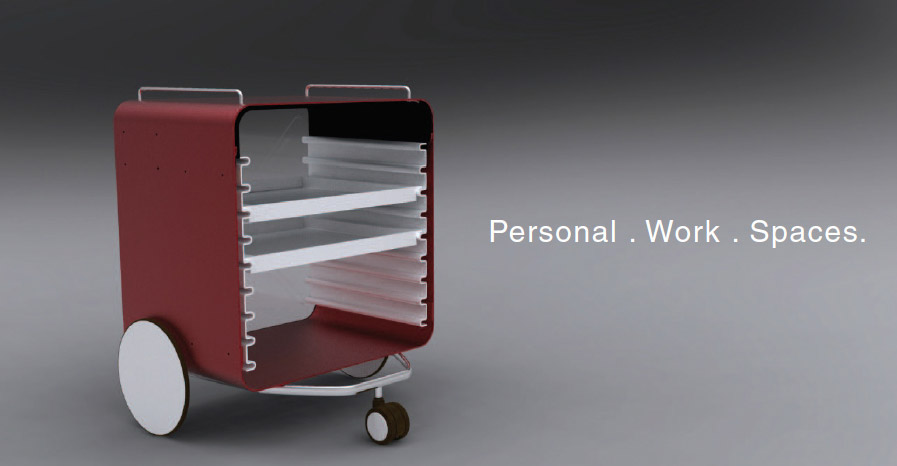
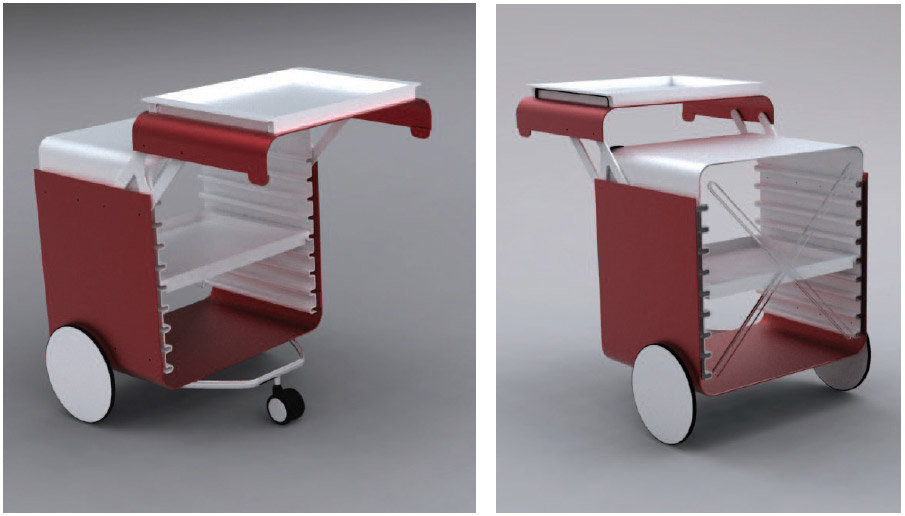
The Context
Most people have a personal desk at home that they use for working on. It is usually referred to as the personal workspace. It is usually a small table surface at home in a corner. However, a brief glance at some of these spaces reveals the myriad uses people have for this small space.
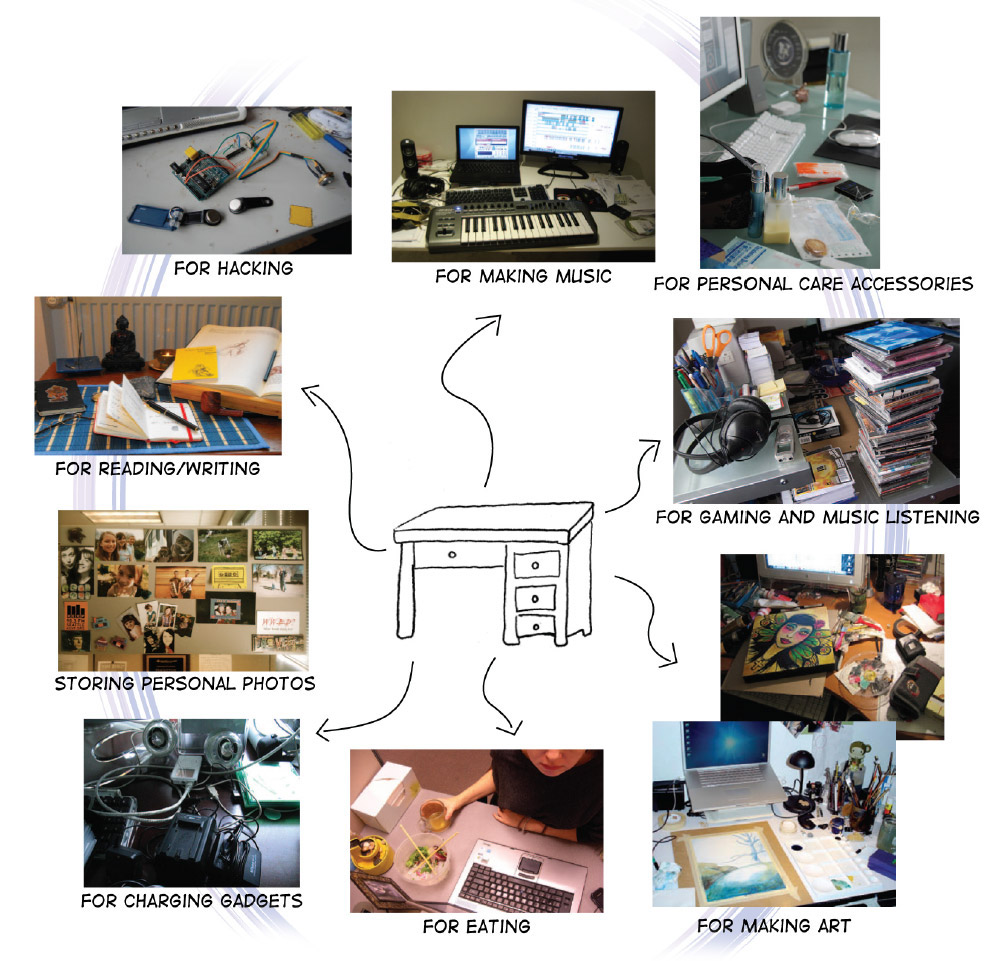
The Problem
However, all the different spheres of usages usually overlaps at some time in this small space. We work, play and eat in the same area, sometimes doing all these activities at once.

More often than not, this personal working space usually grows to become a disorganized mess of gadgets, personal artifacts and work effects over time. The chaos make it difficult and frustrating to get things done. The experience of stopping in the middle of a task to spend time looking for something you have forgotten in the disarray of the desktop is probably not unique to a few individuals.
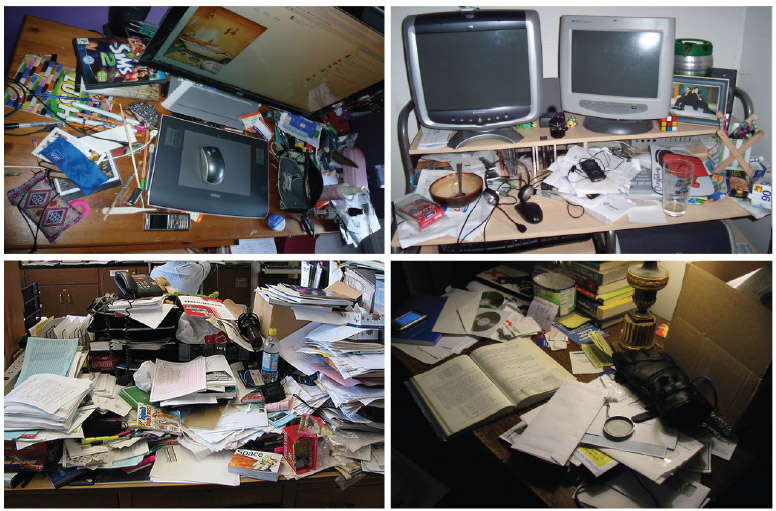
Can a re-design of the personal working space help with this problem?
Observation
We start by examining the different working spaces of people around us. What do they have on their tables? How do they organize their space and use it?
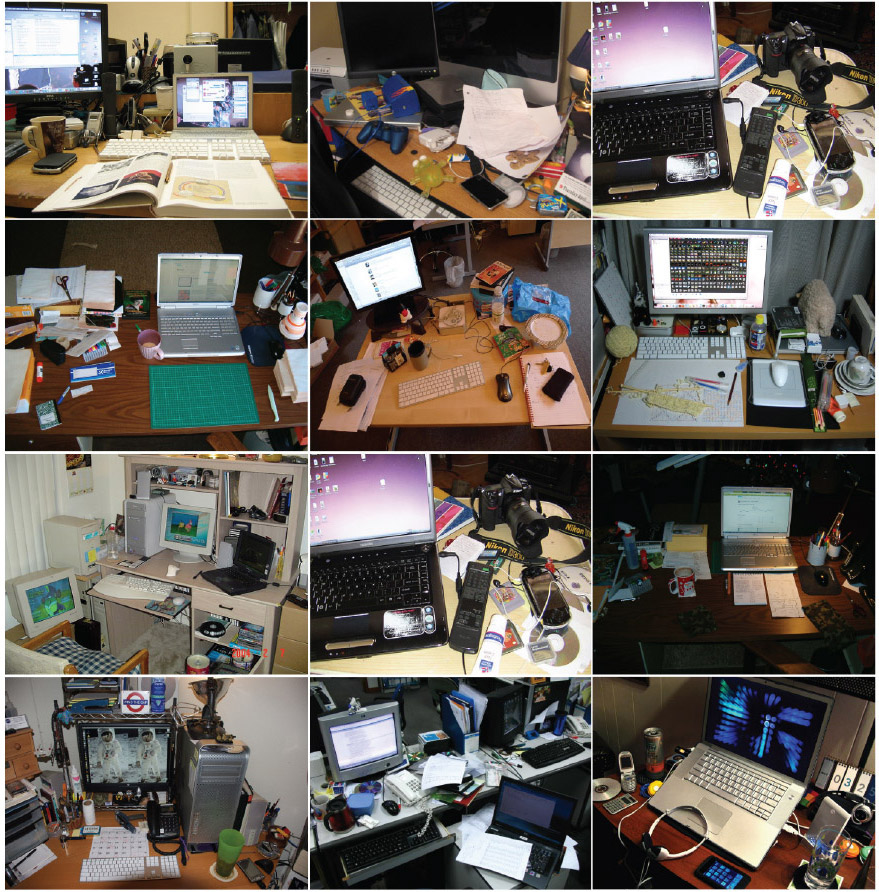
Catalogue of Items Found on Desk Spaces
We begin by cataloging all the items found on the desk spaces we have seen.

Comparing The and Now
A look at the design of writing desks a few hundred years ago and the design of our modern work desks today showed minor differences. The design of the work desk has not changed significantly since early times.
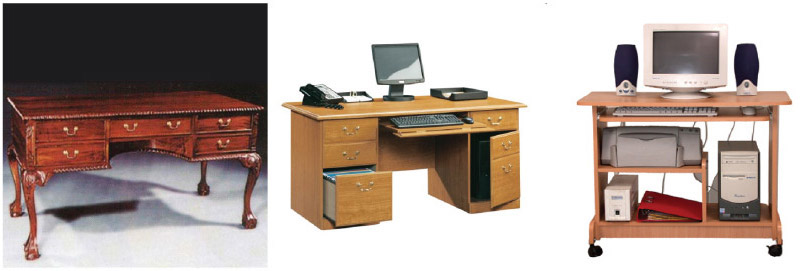
Yet a comparison of how people use their tables 500 years ago and how we use our work desks today shows a great difference. We are asking much more of our desks today. Yet the work desk has not evolved to suit our needs.
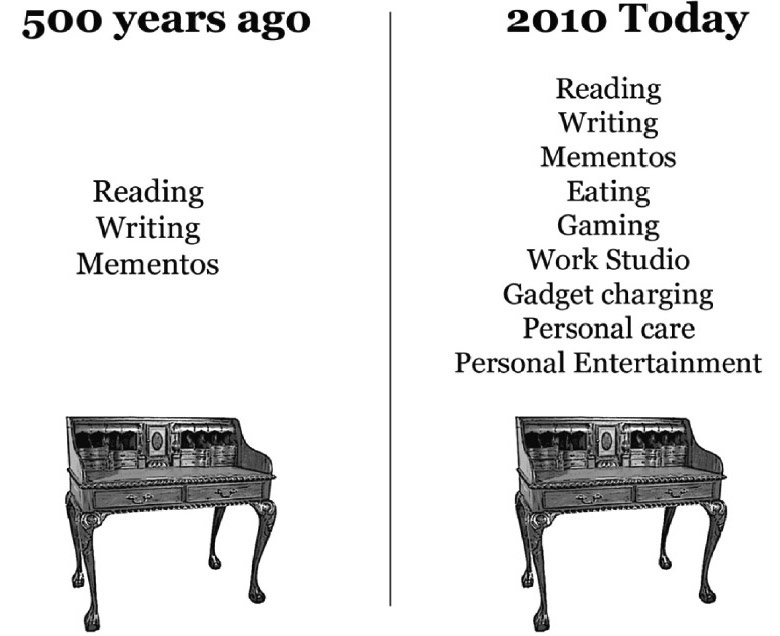
Perhaps the most important difference between the two eras has to do with the mindset in which we approach our tasks. We are now living in a Twitter era in which our attention spans are getting ever shorter by the second. The 21st century is also the time when the term "multi-tasking" was imported from the computer teminology into which we live our lives.
It is common for people today to munch on a snack, drop a quick chat message on Facebook, watch a Youtube video while typing out an office email at their work desk all in the space of 5 minutes.
However, people in the 19th century probably never considered the idea of manipulating their dinner cultery over a meal with one hand, writing a letter with the other hand, watching a play and conducting a business transaction all at the same time at their writing desk!
It is common for people today to munch on a snack, drop a quick chat message on Facebook, watch a Youtube video while typing out an office email at their work desk all in the space of 5 minutes.
However, people in the 19th century probably never considered the idea of manipulating their dinner cultery over a meal with one hand, writing a letter with the other hand, watching a play and conducting a business transaction all at the same time at their writing desk!
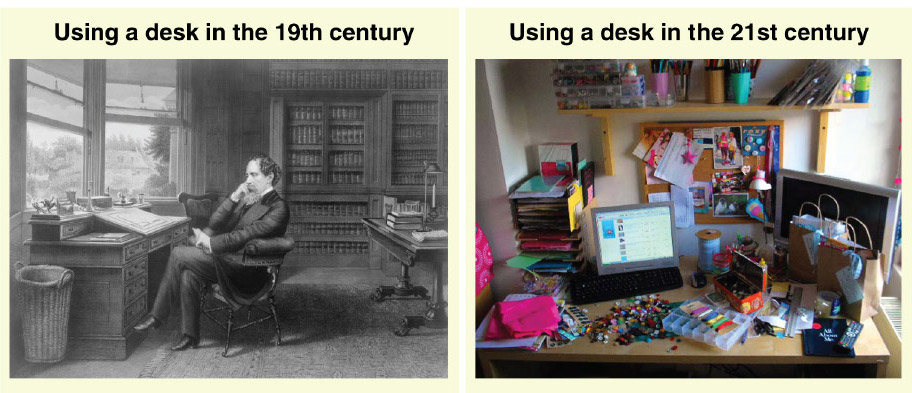
"I can't work like this anymore!!!!!"
"I literally had to stop what i was doing to take a picture of the utter chaos my deks is in right now - 17 million projects on the go, checking out ebay, trying to watch tele - this has to get storted now!!!! (I'll sort the floor later!)"
- Top right image
- Top right image
Trying To Do More In Less
In trying to do more in less, we generate more confusion for ourselves because we do not know how to handle the ever increasing number of things to do (and keep and organize) with still the same amount of time and physical space. (Maybe we should do less.)
Part of the problem solving process is to look at the root cause of the problem. Perhaps we could take a look back at computers to find a solution to this problem that had its origins in the percepts of the computer world.
Personal Work Space Organization
The most time consuming and tedious thing about working on a physical task is the setting up and the packing away of the paraphernalia and materials needed for the task.

Sometimes, people do not bother to put away the accoutrements of the previous task. When a second task needs to be done, these things get pushed away to one side. The process repeats itself with the taks that come after. Given our short attention span and the numerous things we switch our focus to in a short period of time, the desk ends up being cluttered quite quickly.
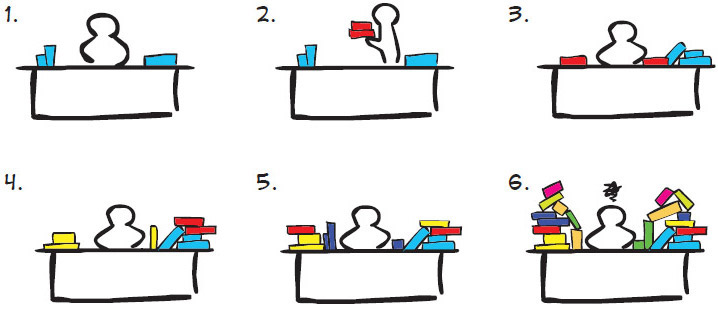
In a world where we switch attention to different matters faster than we can talk, there needs to be a means to quickly put aside a task completely out of the way, and yet be able to come back to it quickly to continue working on it.

Task Tray Concept
Visualizing the work on your desk as separate "work spaces"
Returning to the computing metaphor — in the computer operating system, tasks are constrained to their own windows. You can open one window and work on it. After a while, you can put it aside to work on a second task in another window, before returning to the first window to pickup where you left off, all in a matter of seconds.

What if we apply this concept to our physical working space in the form of mobile task trays?

Task Tray Concept
Visualizing the work on your desk as separate "work spaces"
Advantages
• Each area of work is clearly demarcated.
• No time and energy is wasted to set up and prepare again repeatedly.
• You can keep the entire task tray away when you don't need it to avoid cluttering up your main work space.
• The state of work remains where you left it.
• You can come back to it and pick up where you left off.
• Removable tray could be integrated into table for easy swapping.
• You can come back to it and pick up where you left off.
• Removable tray could be integrated into table for easy swapping.
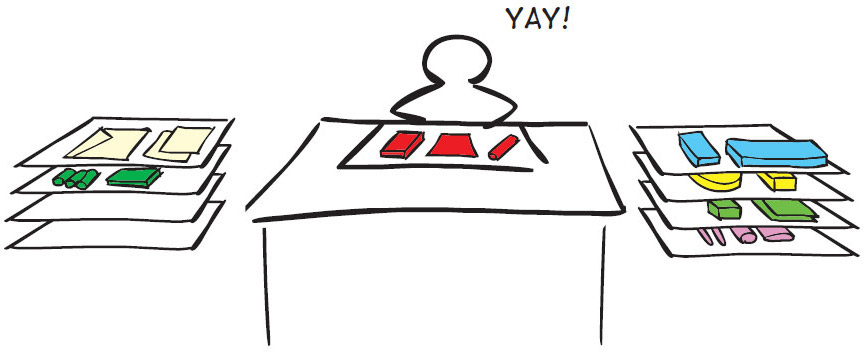
Identifying the Work Desk "Activity Area"
Photo documentation of the work desks shows that there is one area on the work table that people tend to use the most often for their activities.
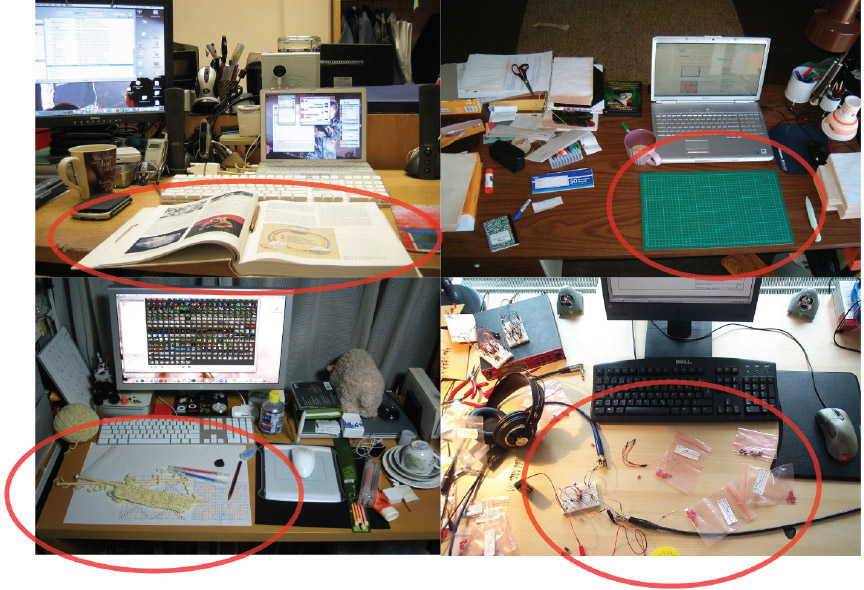
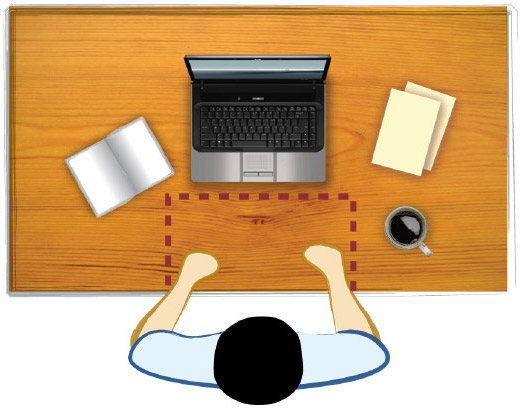
Early Explorations
Early explorations of the concept focused on the idea of a working area or tray that will slide out of the table in front of the user whenever needed.

The 1:1 scale of the mockup included a concave curve to bring the user closer to the table. The first mockup showed up some potential problems in the relationship of the size of the tray to the table.


Early Studies For Table Forms
Another exploration to have the mobile work tray adjacent to other work spaces (eg, the laptop) instead of under the table. The user only needs to change his sitting angle slightly to turn his attention to another workspace.
The initial table form was referenced from IKEA's GALANT table system. Advantages of such a table form maximizes the use of corner spaces in homes.

A second exploration modified the table curve and reduced the table dimensions to suit the confines of a HDB flat. The tray area is mapped out as well to determine the space constrains of a smaller table.
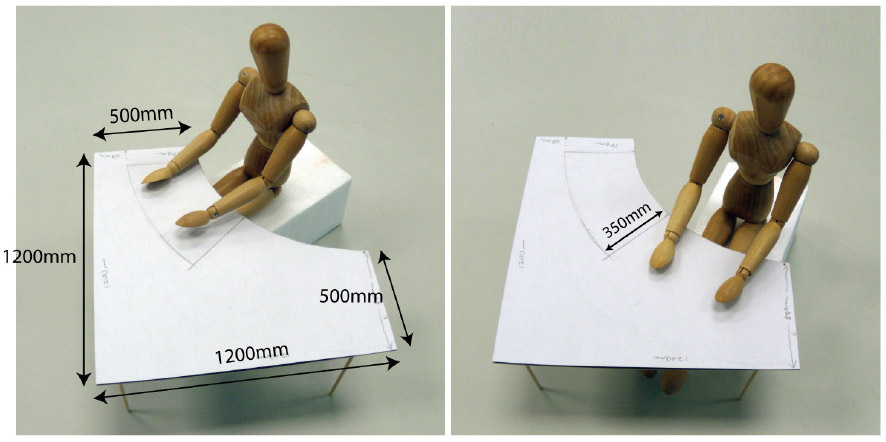
A further exploration in the idea of smaller tables. Having several small modular tables allows for greater flexibility in how you want to organize your space. A C-shaped table also allows for multiple configurations. The work tray is inset into the table surface itself.

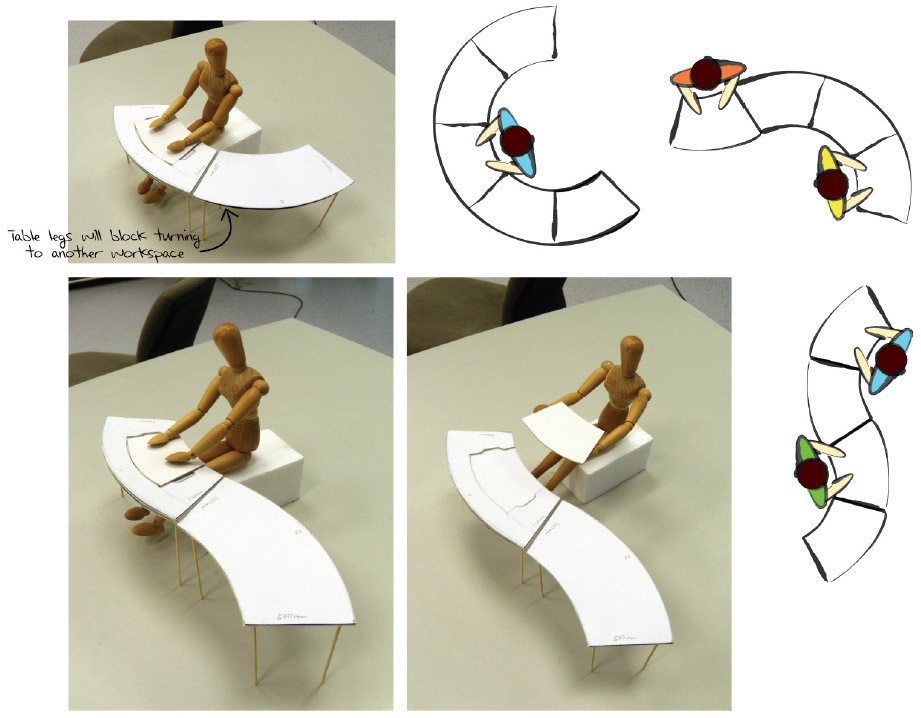
More Studies For Table Forms

Taking Stock...
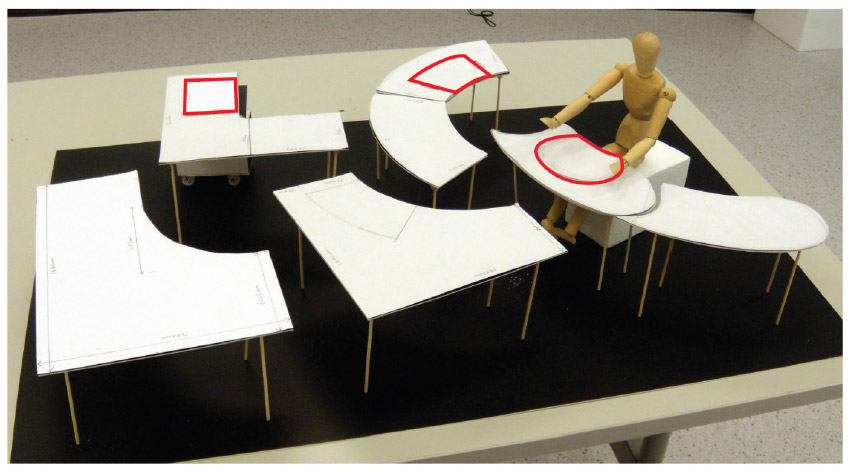

Tray Storage Design Options
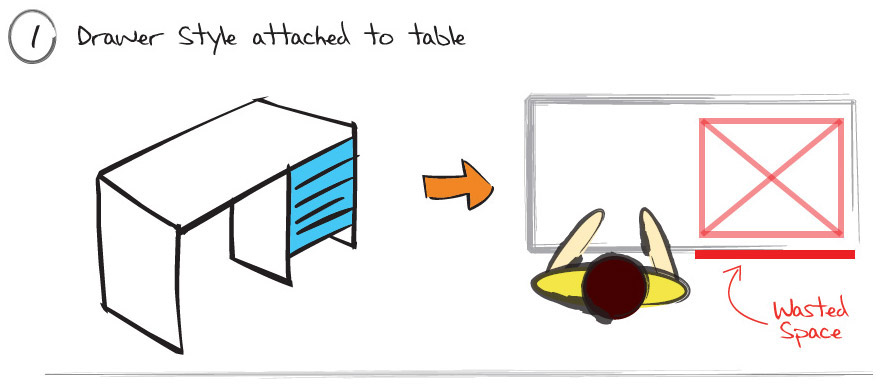


Why A Mobile Tray Workstation
The personal workspace is situated in the home, where you have to share limited space with other family members. Unlike the office workspace, it is often difficult to cordon off space to have uninterrupted privacy to focus on your work. The personal workspace is often a negotaited space with other people (eg, shared bedroom).
A mobile workstation allows foryour workspace to be taken with you whenever you need to move. Your work does not have to be interrupted and you do not have to inconvenience your family wither in the course of your work.
A mobile workstation allows foryour workspace to be taken with you whenever you need to move. Your work does not have to be interrupted and you do not have to inconvenience your family wither in the course of your work.
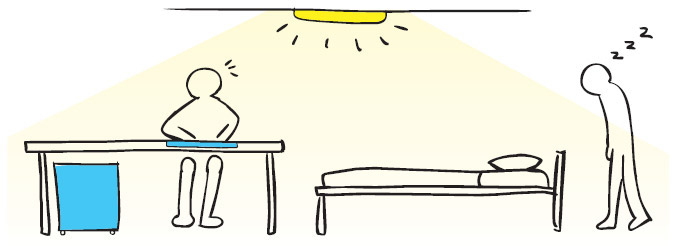


Why A Mobile Tray Workstation
The personal workspace also tends to be isolated from other areas of the home where family interaction takes place (eg, the living room). A person working at his personal workspace (eg, bedroom) is cut off from the rest of the family simply by being in another room, even when he is not doing anything much than browsing through the internet.
Not all work are high-concentration tasks. With a mobile workstation, the user has the option of cloistering himself away for quiet focus, or being part of the family activities going on around him while doing light work.


Mobile Tray Workstation Concept
1st Concept

An initial idea of the cabinet featuring curved corners and large wheels for friendly appeal. A sliding tray support allows for mobile working.
Materials


Workstation / Cabinet Concept Mockup
A rough mockup of the cabinet showed up several problems:
• Cabinet size
• Cabinet size
• Height of the cabinet in order to be feasible as a mobile workstation
• Top tray holding surface needs to be extended further for better comfort
• Better way to support the weight of the top tray without toppling over the cabinet
• Better way to support the weight of the top tray without toppling over the cabinet
Mobile Tray Workstation Concept
Refinement

Further refinements to the design
• The tray support is extended through use of hinges which lock themselves into place
• Two wheels were added to the front to support the extra weight
• A back support snap-in piece is added to stabilize the hollow frame structure

When the user needs to extend the tray support, he grasps the metal bars and lifts the tray support towards himself. Two hinges by each side of the cabinet swing and lock into position at a predetermined height.
Tray Design Development
The first design was referenced off an existing side table tray design. Its shallow depth allows for ease of use at a table level when the user rests his arms on the tray to work.

The rounded corners are too reminiscent of food trays, so the tray design was amended to make it more of a "working" tray. Inspiration was taken from heavier hotel and kitchen trays.

The tray was edited to allow the tray to slide smoothly into place on top of the tray support.
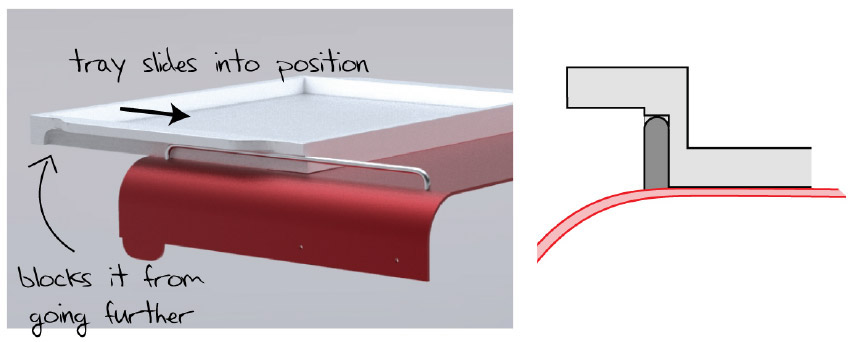
Final change to the tray design to allow the tray to stay locked into position. Tray is now placed down instead of being slided into position.

Final Design
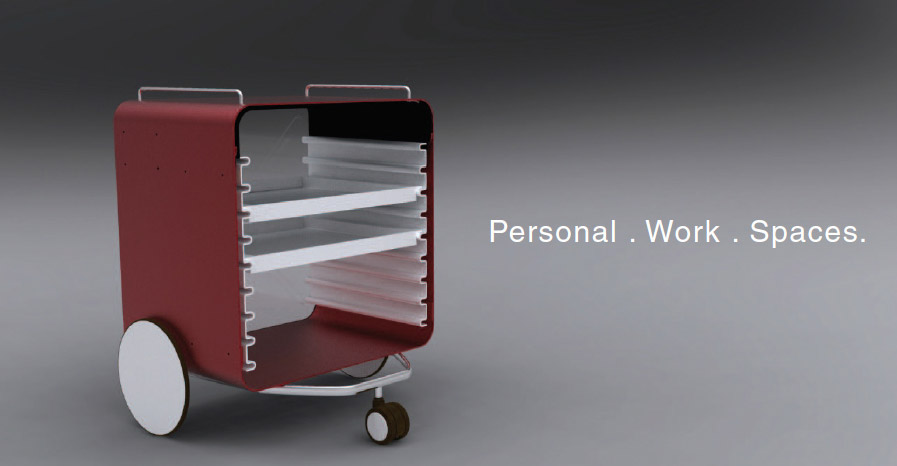
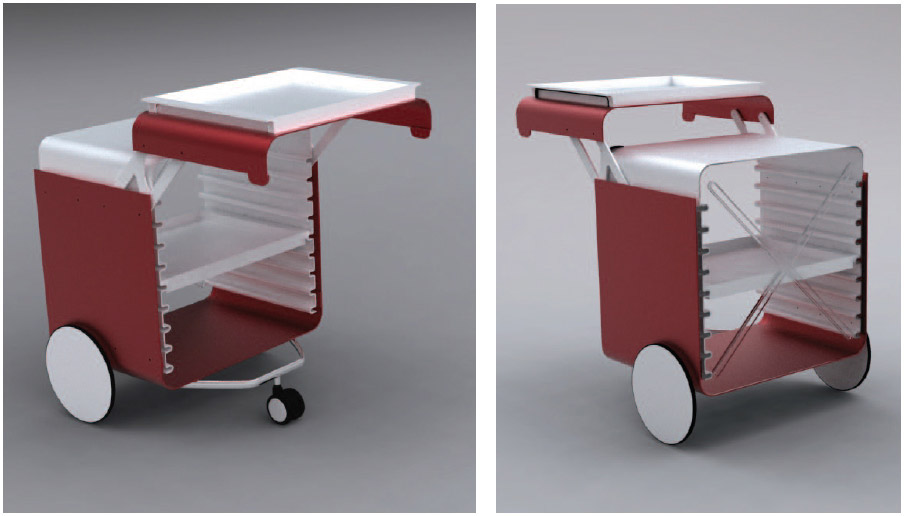
Exploded View
